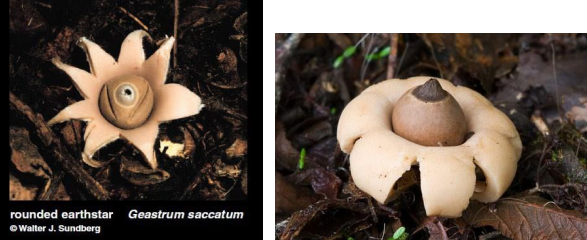Illinois Mushrooms
1/143
There's no tags or description
Looks like no tags are added yet.
Name | Mastery | Learn | Test | Matching | Spaced |
|---|
No study sessions yet.
144 Terms
Fungi
Which Kingdom are mushrooms a member of?
10,000
How many species of mushrooms are found in the US?
2,000
How many species of mushrooms are found in Illinois?
mycology
What is the study of mushrooms called?
pathogens
What do you call destructive mushrooms that cause plant disease?
Mycorrhizae
The symbiotic relationship between the roots of a plant and fungus, helping plants thrive even in harsh soil and drought conditions
Mycelium
The threads that mushrooms wrap around plant roots to provide water, nitrogen, carbon, and other minerals and in return giving the fungus with sugars and carbon
0
How many mushrooms are listed as endangered or threatened species?
Basidiomycetes and Ascomycetes
What are the two fungus groups that mushrooms belong to?
Basidiomycetes
Which is the most common fungus group for mushrooms?
Basidiomycetes
Spore droppers
Ascomycetes
Spore shooters
basidia
Club-like structures of Basidiomycetes
asci
Sac-like structures of Ascomycetes
cap
Structure that supports the spore-producing surface (AKA pileus)
gills
Downwardly directed with pores, spines, or veins (AKA lamellae)
agaric
Mushrooms with gills on the underside of their caps
Boletes and Polypores
(Two types) Mushrooms that possess tubes with pores
Tooth fungi
Mushrooms with spines or teeth
Chanterelles
Mushrooms with veins
protective layer
Initially connects the cap edge to the stalk (AKA partial veil)
ring
Forms at maturity when the protective layer breaks apart (AKA annulus)
stalk
Extends the cap into the air allowing the mushroom to better disperse spores (AKA stipe)
universal veil
Can cover the entire mushroom when young
volva
Forms when the universal veil tears open near the base of the stipe
hyphae
Microscopic strands that secrete enzymes that break down surrounding material into soluble molecules that are absorbed through cell walls
mycelium
The collective term for hyphae
fungus
Mushrooms are the spore-bearing, or reproductive parts of a ______.
fruiting body
Generally the only phase of a mushroom seen
Stalked Scarlet Cup
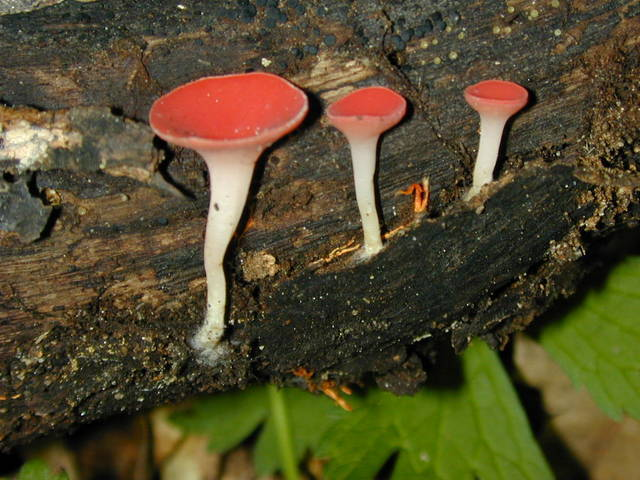
No
Does the Stalked Scarlet Cup have gills?
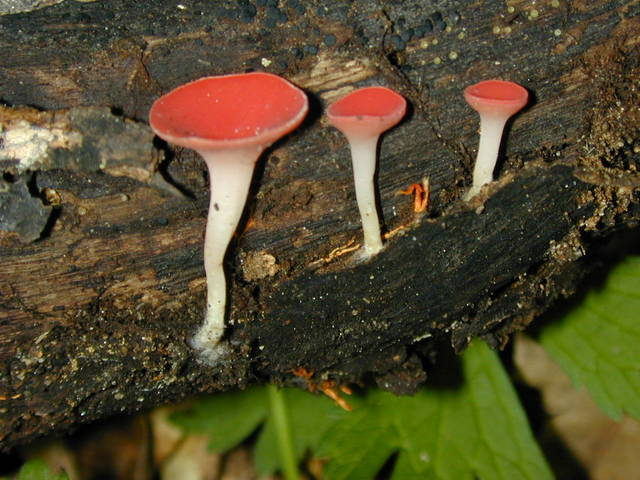
Grows on fallen wet sticks and branches in damp, deciduous woods in spring/early summer.
Stalked Scarlet Cup habitat
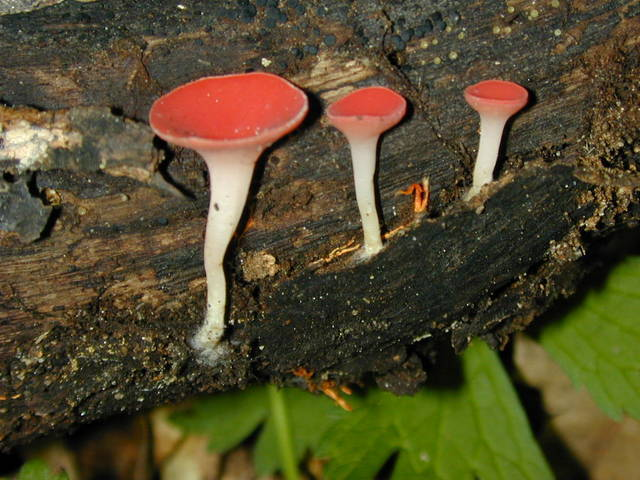
Not edible, spores produced in lining of the cup.
Stalked Scarlet Cup additional info
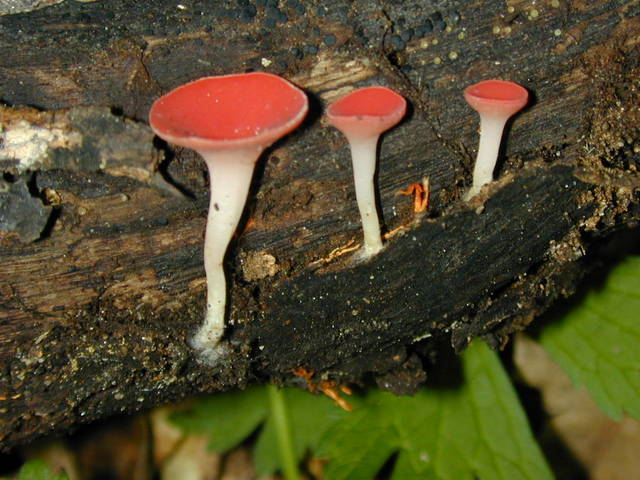
Yellow Morel
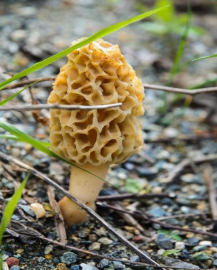
Does the Yellow Morel have gills?
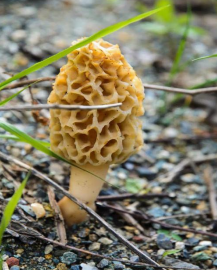
They are one
Special thing about the Yellow Morel cap and stem
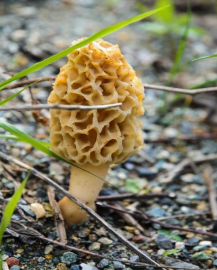
Beginning in early April through early May. Prefers to grow around dead American Elm trees, dead cottonwoods, old apple trees and other fruit trees, live ash and Tulip Poplar trees. Sometimes will grow in fresh mulch and around white pines.
Yellow Morel Habitat
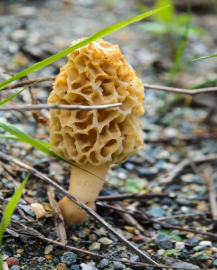
Sometimes called Gray Morel or Blonde Morel depending on coloration. Morels are edible. There are “false morels” that look similar to the common yellow or black morel. These, however, are not completely hollow like traditional morels and are considerably heavier. These mushrooms are toxic and it is dangerous to mix these with the traditional, edible morels.
Yellow Morel additional info
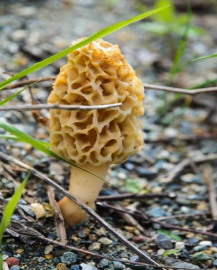
Stalked Scarlet Cup, Yellow Morel
Which mushrooms are Ascomycetes?
Lion’s Mane
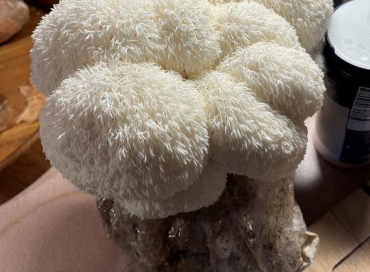
No
Does the Lion’s Mane have gills?
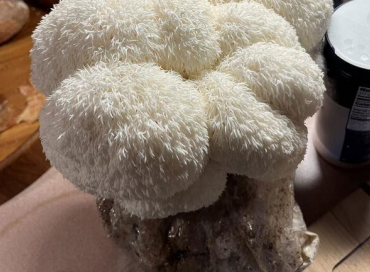
One to several fruiting bodies on hardwood logs, stumps, etc. Also on tree wounds, usually in autumn. Not rare, but not common.
Lion’s Mane habitat
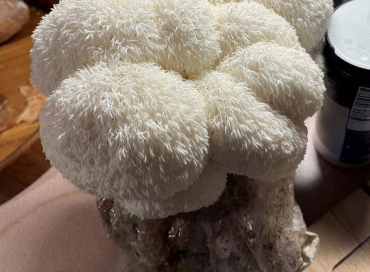
Is edible, similar to another species, Bear’s Head.
Lion’s Mane additional info
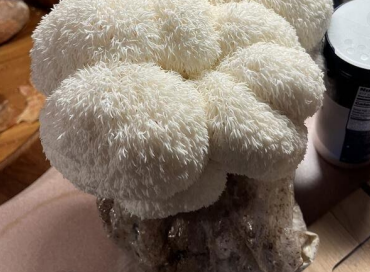
Bird’s Nest or Splash Cup
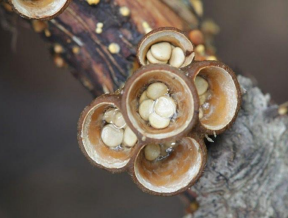
No, it has eggs
Does the Bird’s Nest have gills?
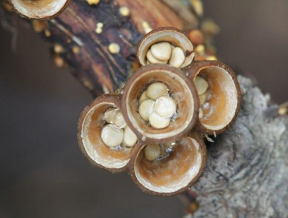
Found in moist, shaded areas. Woodlands, parks, gardens, dead logs, twigs, wood chips and bark mulches. Will grow year-round but most abundant in late summer/early fall.
Bird’s Nest habitat

Not edible. Not known to be toxic or harmful to humans, just undesirable for consumption. The spore cases, peridioles, are dispersed when rain hits the cap just right and shoots the peridioles out of the nest, dispersing spores.
Bird’s Nest additional info

Yellow Chanterelle
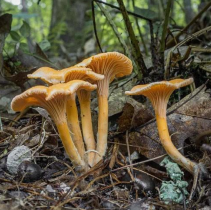
Yes, runs down to stem and fades away
Does the Yellow Chanterelle have gills?
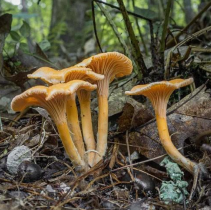
Starts in late May to late June. Around oaks, especially after summer rains. Sometimes, these can be found into September.
Yellow Chanterelle habitat
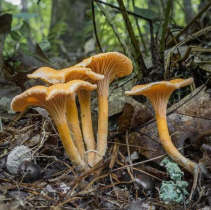
Trumpet shaped. In northern regions, can have a strong, apricot smell. The smell is not common of those found in Illinois. These are edible.
Yellow Chanterelle additional info
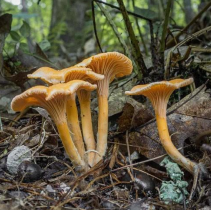
Crown-Tipped Coral
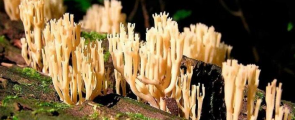
No normal cap; many coral-mushroom branches
Does the Crown-Tipped Coral have a cap?
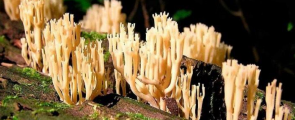
Grows individually or in groups on the dead wood of deciduous trees in summer.
Crown-Tipped Coral habitat
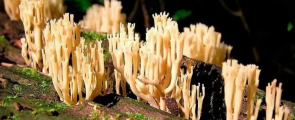
Is edible, said to be peppery in taste.
Crown-Tipped Coral additional info
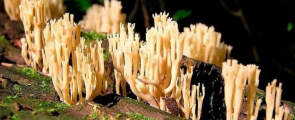
Dryad’s Saddle
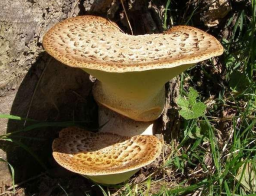
Circular to fan-shaped, yellow-tan, covered with dark, distinct brown scales. A polypore. The fruiting body has tubes with pores on the underside of the cap. The stalk is lateral to eccentric (off-center) and black at the base.
Dryad’s Saddle cap
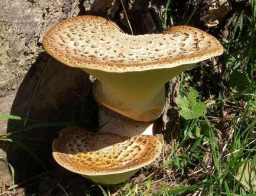
Grows singly or in layers on living or dead deciduous wood. Can reappear for years in the same locations often fruiting more than once a year. Common in spring and summer.
Dryad’s Saddle habitat
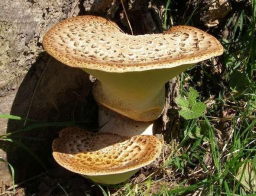
Considered edible, known to have a watermelon taste when raw.
Dryad’s Saddle additional info
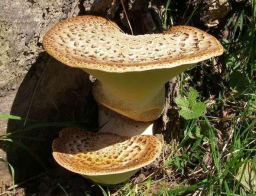
Elegant Stinkhorn
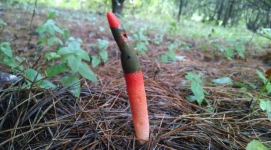
Long, tapered, pinkish orange column. Top part has greenish brown, smelly slime coating with spore mass. White cup around base. Height 4-7” total.
Elegant Stinkhorn body
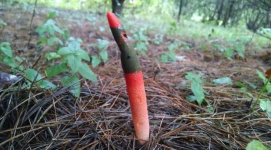
Grows on leafy debris, mulch piles (humus) and rotting wood starting in July and through September. The “stinkhorn” name is applied to this species due to its pungent odor
Elegant Stinkhorn habitat
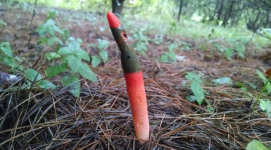
Considered edible in the immature stage, but caution is encouraged due to toxic look-a-likes.
Elegant Stinkhorn additional info
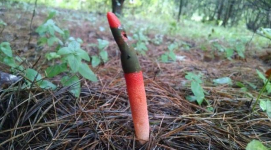
Emetic Russula
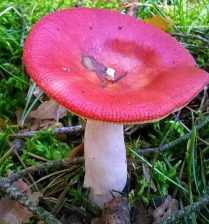
Off-white/pale cream gills that are closely spaced and brittle.
Emetic Russula gills
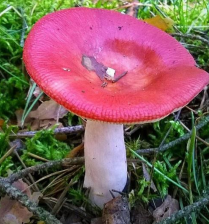
Grows singly or in groups on moss and in mixed woods from July – October. Grows in sphagnum bogs or under conifers.
Emetic Russula habitat
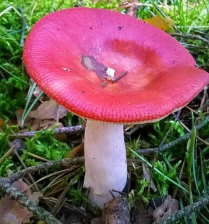
Poisonous. Can cause severe gastrointestinal upset and vomiting, nausea, diarrhea, and stomach cramps. Also known as the vomiting russula or “sickeners”.
Emetic Russula additional info
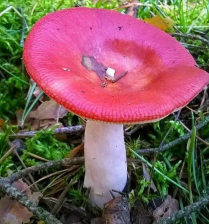
Fawn or Deer Mushroom
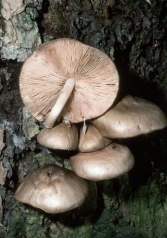
Pinkish white gills closely spaced. Younger mushrooms start with white gills and fades to a pink shade.
Fawn or Deer Mushroom gills

Grows singly or scattered on dead wood or on the ground over buried wood from May through October.
Fawn or Deer Mushroom habitat
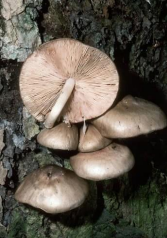
Edible with caution. Many of its look-a-likes are poisonous.
Fawn or Deer Mushroom additional info
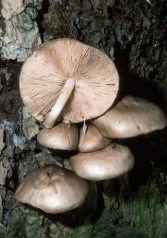
Giant Puffball
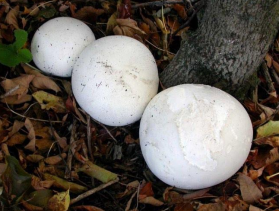
Giant mass, sometimes of a softball but often times larger – up to 2 feet across. White to greyish. Minor dimples on surface, mottled. Soft, turning greenish-yellow with age and then darker tan as the spores mature.
Giant Puffball flesh
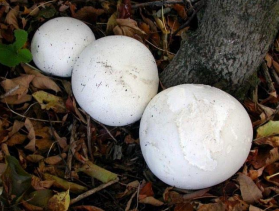
Common on lawns but also in forests beginning in August and continuing into October. Found at the edge of wooded areas.
Giant Puffball habitat
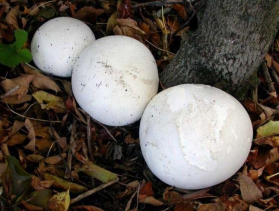
Only edible if cut open and completely white in the middle. If green/yellow it can cause gastrointestinal problems.
Giant Puffball additional info
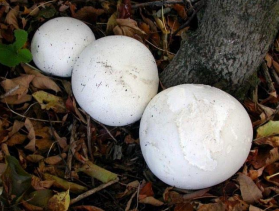
Green-Gilled Lepiota

Initially white but change to dull green over time. Closely spaced.
Green-Gilled Lepiota gills

Forms fairy rings in lawns, meadows, and pastures in summer and early fall.
Green-Gilled Lepiota habitat

Poisonous. Can make a person very sick. Will cause violent gastrointestinal upset and may require hospitalization.
Green-Gilled Lepiota additional info

Indigo Milk Cap
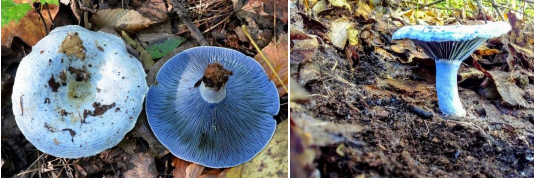
Medium sized, 2-4” cap. Light blue with darker blue rings extending outward from a center depression. When young, the cap will curl downward, when maturing, the cap will flare upwards. When fresh, will “bleed” an opaque blue liquid when cut.
Indigo Milk Cap cap
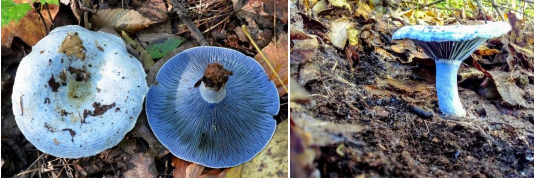
Light blue, thin, and connected to the stem. With age the blue fades slightly and may
show green hues. Will leak blue liquid when cut.
Indigo Milk Cap gills

Grows on soil in mixed woodlands, found occasionally, beginning in early summer through early fall.
Indigo Milk Cap habitat (it’s edible btw)
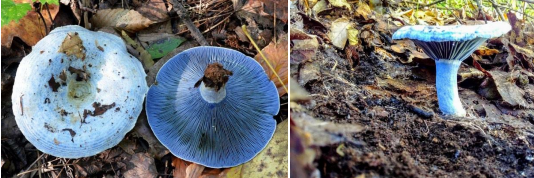
Jack-O-Lantern
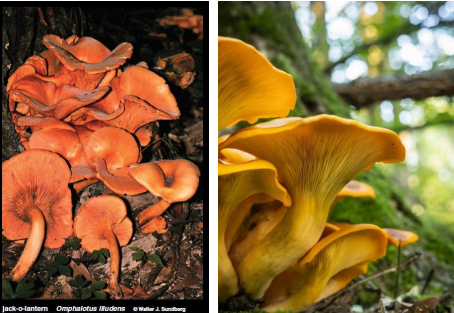
Bioluminescent, or glows. Orange, thin, and well-defined. Gills can run down the stem, often the reason it can be confused with the Yellow Chanterelle, but the Jack-O-Lantern’s gills are razor thin.
Jack-O-Lantern gills
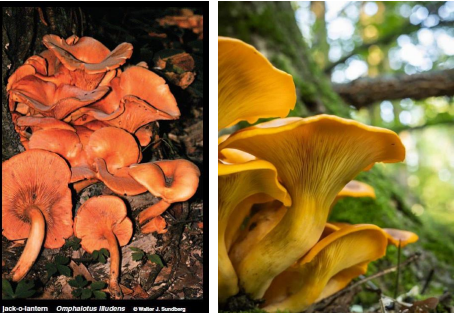
A root parasite that grows from soil around trees and stumps, usually oaks, mainly in autumn but also in spring or summer. Rarely found alone, almost always in clusters.
Jack-O-Lantern habitat
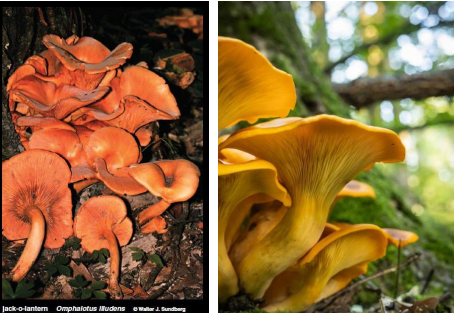
Toxic, will cause severe gastrointestinal pain, vomiting, chills, and sweating.
Jack-O-Lantern additional into
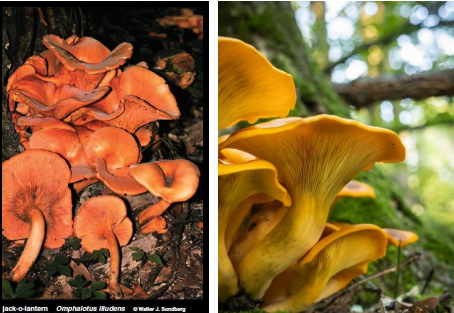
Malodorous Lepiota

Crowded, white gills become dark brown as the mushroom ages and spores mature.
Malodorous Lepiota gills
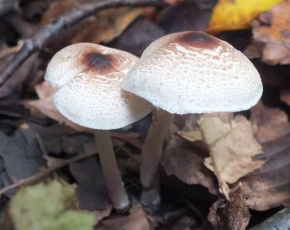
Grows in humus in mixed deciduous-coniferous forests in summer and fall.
Malodorous Lepiota habitat
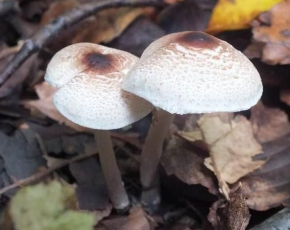
Also known as the Stinking Dapperling for its rubber/tar smell. Should be considered poisonous as most species of Lepiota are.
Malodorous Lepiota additional info
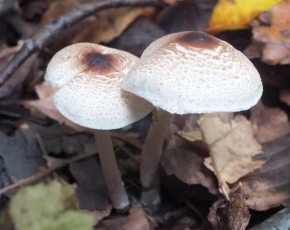
Orange Mycena
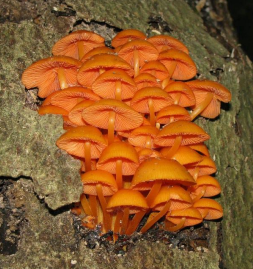
Pinkish yellow, closely spaced, staining orange-yellow when cut with bright red-orange edges and a light cream inner area.
Orange Mycena gills
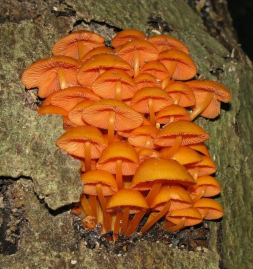
Grows in dense clusters on deciduous wood from June –September.
Orange Mycena habitat
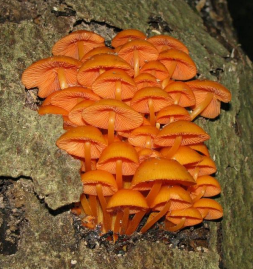
Not recommended/not edible. Does have antibiotic and antitumor properties.
Orange Mycena additional info
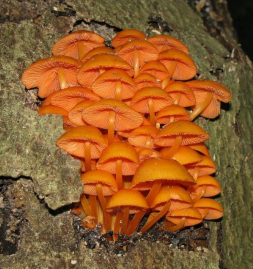
Oyster Mushroom
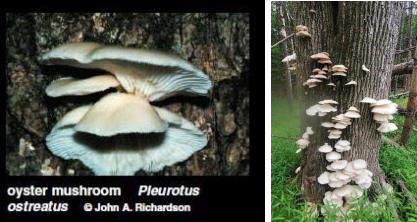
Size ranges from 3-12 inches across. Oyster-shell shaped with smooth surface. White to silver/grey in warm weather and darker tan to brown in cool weather. Skin on cap can be peeled if rain-soaked.
Oyster Mushroom cap
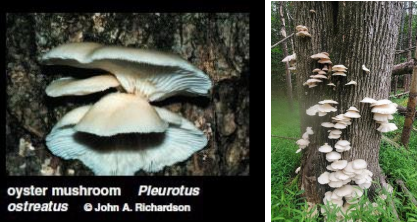
On wood, both living and dead tree stumps and logs. Occasionally on ground over buried roots/stumps. Nearly any deciduous tree.
Oyster Mushroom habitat
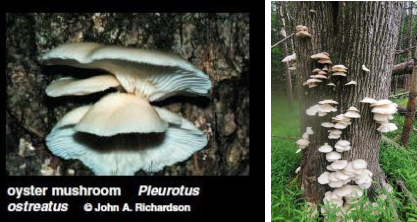
Grows nearly year-round and is an edible mushroom of Illinois.
Oyster Mushroom additional info
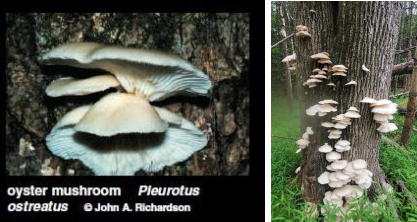
Rounded Earthstar
